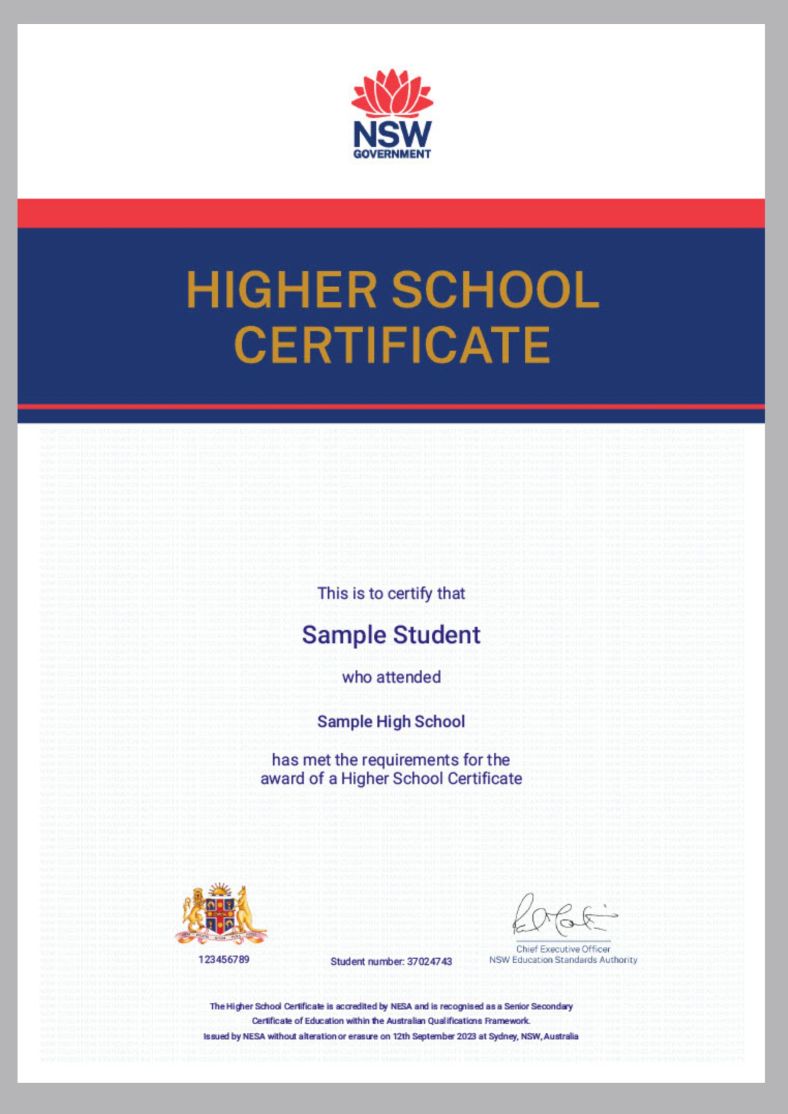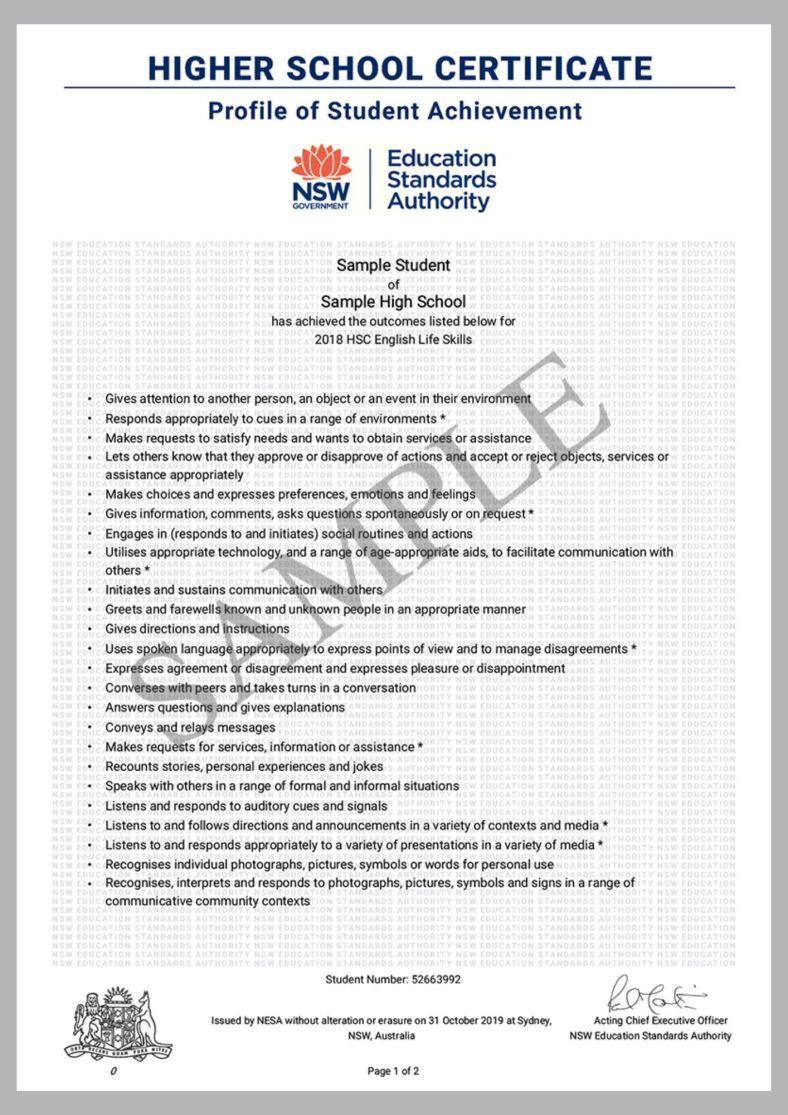Understanding your HSC results
Understand the different components of your NSW Higher School Certificate (HSC) results and how to interpret your marks. View samples of the different documents and certificates.
HSC results
HSC results contain a detailed package of information about each student's achievements in each course. They are not a single number like an ATAR.
Your mark in each course is a 50:50 combination of your HSC exam mark and your school-based assessment mark.
View samples of the different documents and certificates.






School assessment mark
School-based assessment tasks can measure a wider range of skills and knowledge than an external exam can. Students must complete a number of school assessment tasks for each of their courses. These may include:
- tests
- written or oral assignments
- practical activities
- fieldwork
- projects.
Schools submit a HSC assessment mark for every student in most courses. The NSW Education Standards Authority (NESA) then puts the marks through a moderation process, to allow a fair comparison of marks in each course across different schools.
Learn more about how NESA moderates marks.
Examination mark
The examination mark for a course shows the student's performance in the HSC exam set and marked by NESA. Depending on the course, the HSC examination can include:
- a written paper
- speaking and listening examinations
- practical examinations
- major works submitted for external marking.
Each student's exam is marked, and then their achievement is reported using a set standard of performance for each course.
Judging is a process that matches a student’s raw exam marks to the standards. The standards describe what a student knows and can do. Student achievement is related to the standards, not other students. This means a student gets the mark they earn for their performance, regardless of the performance levels of other students.
Understand how HSC results are determined in line with these performance standards.
Performance bands
Student performance in each HSC course is measured against defined standards. The performance band descriptions give meaning to the HSC mark. Each band represents a particular range of marks:
- Band 6 = 90 - 100 marks
- Band 5 = 80 - 89 marks
- Band 4 = 70 - 79 marks
- Band 3 = 60 - 69 marks
- Band 2 = 50 - 59 marks
- Band 1 = 0 - 49 marks.
Each band is aligned to what a student at that level of performance typically knows, understands and can do. These descriptions give meaning to the HSC marks.
For a 2 unit course:
- Band 6 indicates the highest level of performance
- The 'average' performance in most courses is usually a mark in the mid-70s (Band 4)
- The minimum standard expected is 50 (Band 2)
- Band 1 (0 to 49) indicates a student has not demonstrated the minimum standard expected.
For an Extension course, the bands are E4 (highest level of performance) to E1.
Satisfactory completion
To satisfactorily complete a course, students must:
- follow the course developed or endorsed by NESA
- apply themselves with diligence and sustained effort
- achieve some or all course outcomes.
Non-completion
Failure to meet one or more of these requirements may lead to a 'Non-completion of course' or 'N' determination. An 'N' determination for a course may make a student ineligible for the HSC.
Australian Tertiary Admission Rank (ATAR)
The Universities Admissions Centre (UAC) uses the HSC results to calculate the ATAR. This is not a mark or a summary of the HSC. It is a ranking system used to allocate university placements.
UAC calculates the university admission ranks each year using students’:
- moderated assessment marks (before alignment with the standards)
- total exam marks (before alignment with the standards).
Getting an ATAR is optional. Students who do not wish to enter university the following year may choose not to request an ATAR.
Eligibility
To be eligible for an ATAR, students must satisfactorily complete at least 10 units of certain Board Developed Courses for which formal examinations are conducted by NESA. Visit the UAC website for further information.
Life Skills
Life Skills courses have been developed for the small percentage of students with disability, in particular those with an intellectual disability, for whom the regular outcomes and content are not appropriate.
Course achievements are:
- reported on a student's Record of Achievement
- shown on a Profile of Student Achievement.
Learn more about Life Skills courses and what the results mean.



